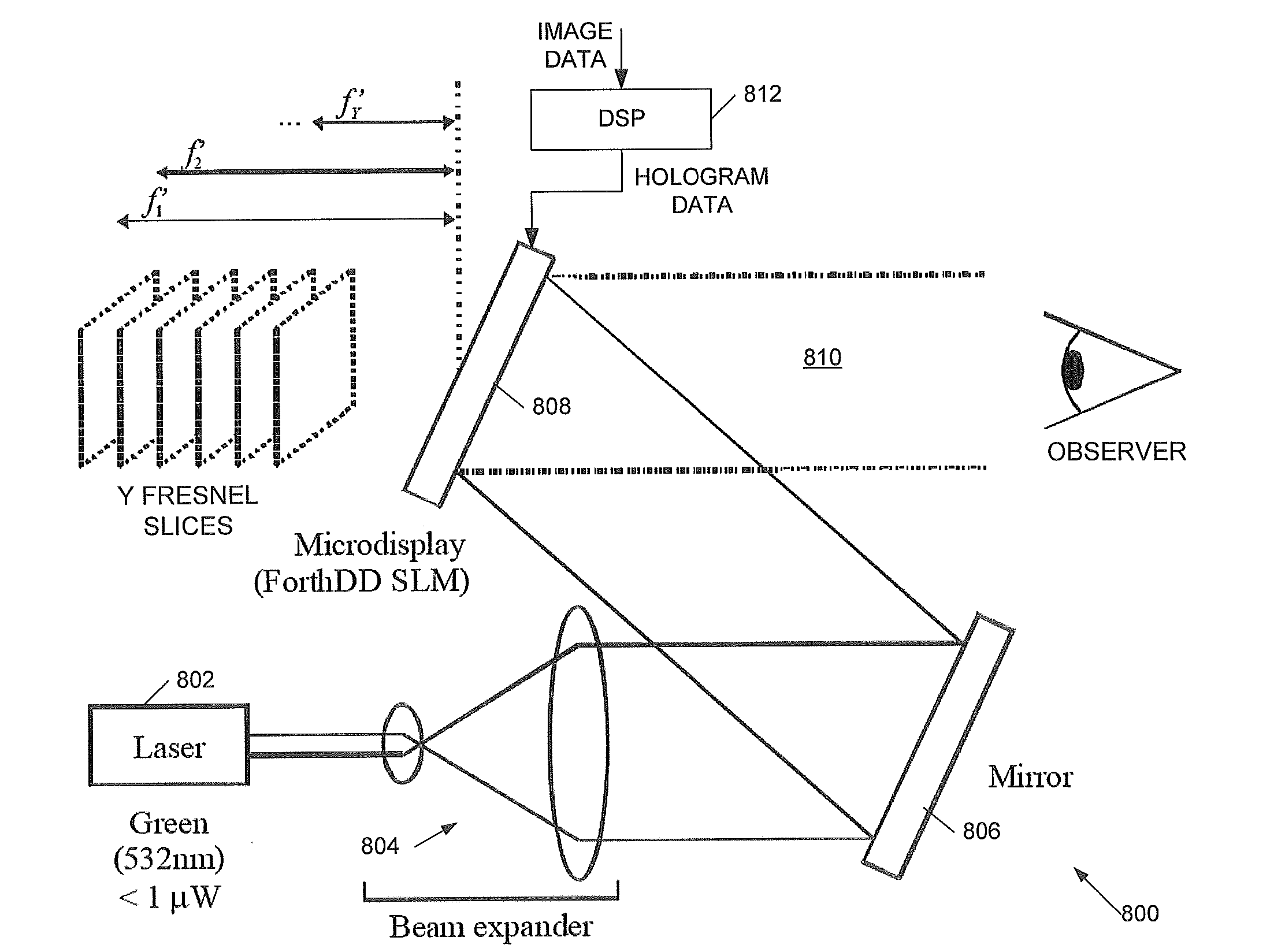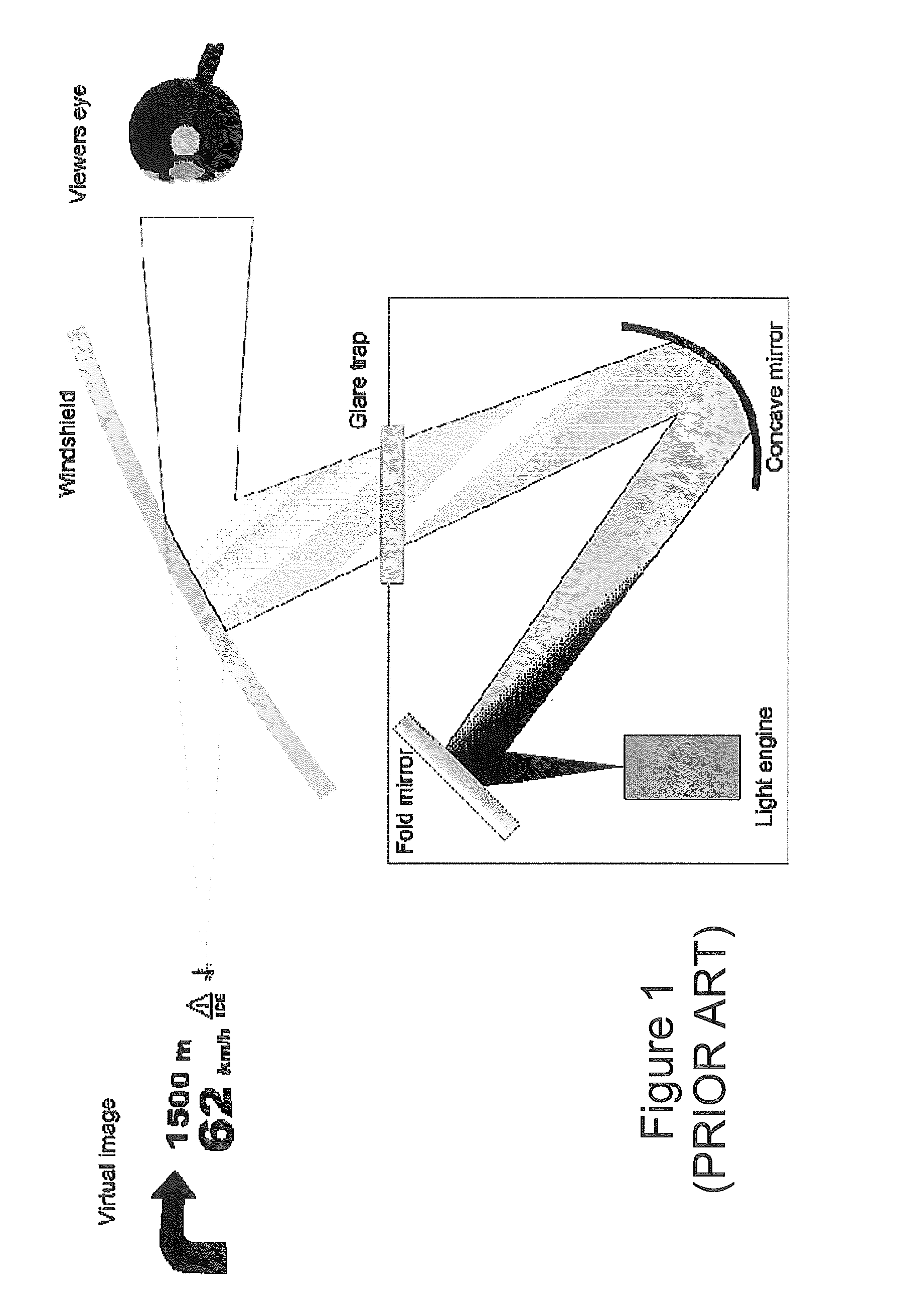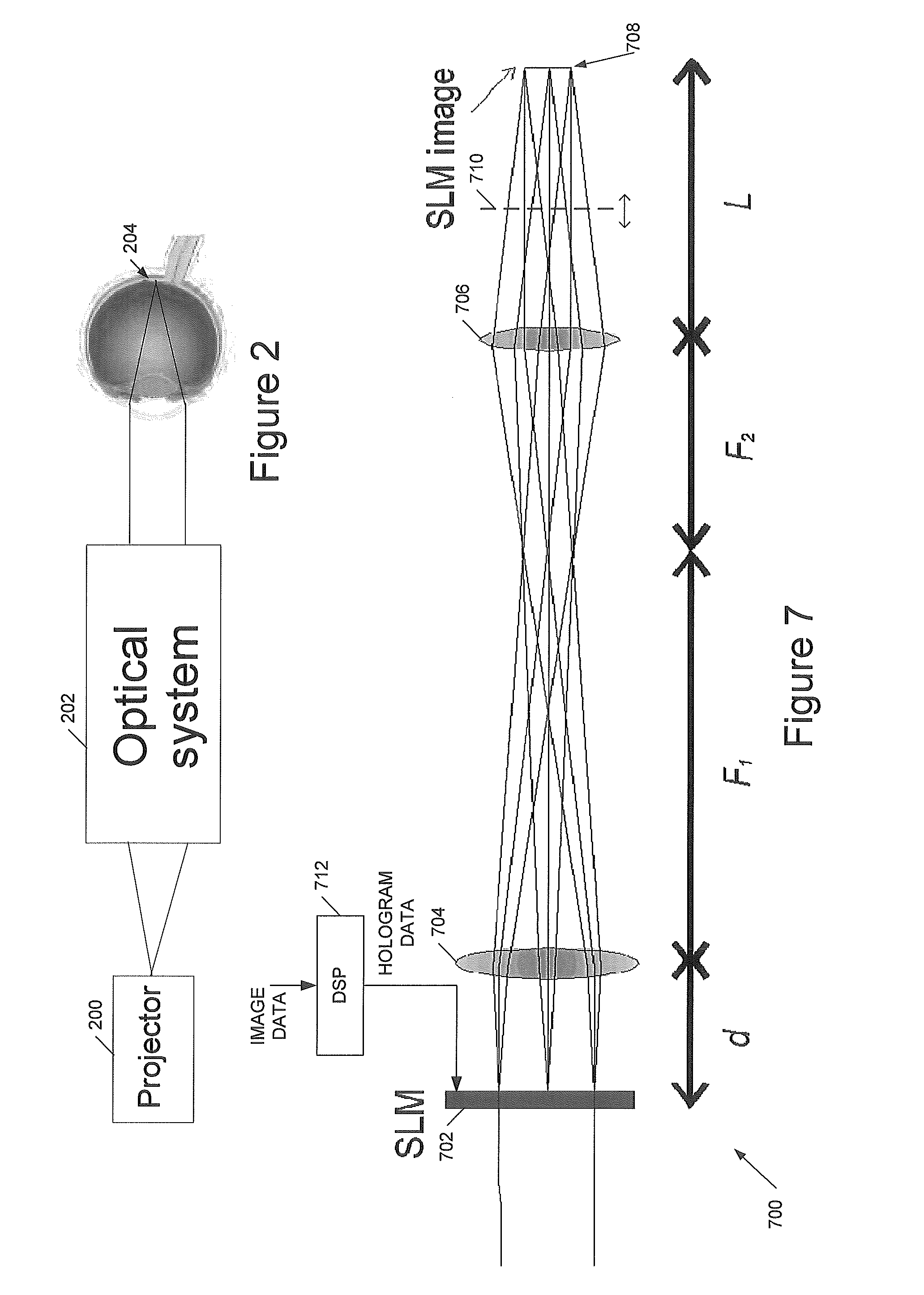Holographic Image Display Systems
a display system and holographic technology, applied in the field of holographic head-up displays, can solve the problems of the size and complexity of the optics involved, and achieve the effect of reducing computational costs
- Summary
- Abstract
- Description
- Claims
- Application Information
AI Technical Summary
Benefits of technology
Problems solved by technology
Method used
Image
Examples
Embodiment Construction
[0051]This invention relates to holographic head-up displays (HUDs), and to three-dimensional holographic image displays, and also to holographic optical sights, and to related methods and processor control code.
[0052]Preferred embodiments of the invention use an OSPR-type hologram generation procedure, and we therefore describe examples of such procedures below. However embodiments of the invention are not restricted to such a hologram generation procedure and may be employed with other types of hologram generation procedure including, but not limited to: a Gerchberg-Saxton procedure (R. W. Gerchberg and W. O. Saxton, “A practical algorithm for the determination of phase from image and diffraction plane pictures” Optik 35, 237-246 (1972)) or a variant thereof, Direct Binary Search (M. A. Seldowitz, J. P. Allebach and D. W. Sweeney, “Synthesis of digital holograms by direct binary search” Appl. Opt. 26, 2788-2798 (1987)), simulated annealing (see, for example, M. P. Dames, R. J. Dow...
PUM
 Login to View More
Login to View More Abstract
Description
Claims
Application Information
 Login to View More
Login to View More - R&D
- Intellectual Property
- Life Sciences
- Materials
- Tech Scout
- Unparalleled Data Quality
- Higher Quality Content
- 60% Fewer Hallucinations
Browse by: Latest US Patents, China's latest patents, Technical Efficacy Thesaurus, Application Domain, Technology Topic, Popular Technical Reports.
© 2025 PatSnap. All rights reserved.Legal|Privacy policy|Modern Slavery Act Transparency Statement|Sitemap|About US| Contact US: help@patsnap.com



